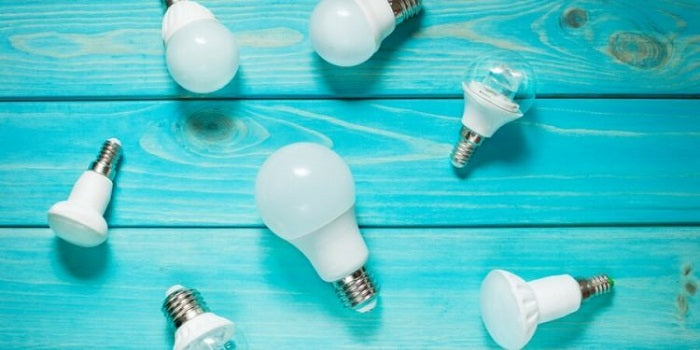LED Light Bulb Buying Guide
What is LED Light Bulb?
Today’s light bulbs are primarily light emitting diodes (LED). LED bulbs fit standard light sockets and are the most energy-efficient light bulb option. They have lower wattage than incandescent bulbs but emit the same light output. This allows them to produce the same amount of light but use less energy. LEDs can last 20 plus years and don't contain mercury.
LED bulbs use an electrical current passed through semiconductor material to illuminate the tiny diodes called LEDs. The heat produced is absorbed into a heat sink, keeping the bulbs cool to the touch. LEDs are available for outdoor use; just make sure the packaging indicates the bulb is rated for outdoor use. LEDs don't contribute to heat buildup, which helps save on air conditioning.
How much power do LED bulb use?
LED Bulbs use up to 90% less energy than an incandescent or halogen bulb of equivalent brightness. LEDs are far more efficient at converting electricity, measured in watts, into light, measured in Lumens.
Lumens: The amount of light emitted from a light bulb. More lumens equals brighter light; fewer lumens equals dimmer light. Standard 100-watt bulbs produce about 1600 lumens.
Watts: The amount of energy a light bulb uses. The lower the watts, the lower the electric bill. CFLs and LEDs have a lower wattage than incandescent bulbs but emit the same light output.

How long dose LED bulb last?
One of the biggest benefits of using LED is its outstanding life time expectation due to very efficient thermal management, LED Bulbs are able to remove heat through heat sinks to help prolong the life expectancy of the bulb by slowing down lumen depreciation. A well-built LED with good thermal management should last up to 50,000 hours. Be wary of retailers making exaggerated claims about the life expectancy of their products.
What light color should you choose?
Light color or light appearance is measured on the Kelvin (K) temperature scale. Lower Kelvin numbers means more yellow light; the higher the Kelvin number, the whiter or bluer the light.
Soft white (yellowish range) 2700 K to 3000 K: This is the standard color of incandescent bulbs. Perfect for bedrooms, living rooms or dens and highlighting dark woods.
Warm white (between the yellowish and white ranges) 3000 K to 4000 K: Perfect for kitchens, workspaces and bathrooms.
Bright white (between the white and blue ranges) 4000 K to 5000 K: It works best in kitchens and bathrooms with chrome or white fixtures.
Daylight (blue range) 5000 K to 6500 K: Perfect for reading.

Light Bulb Types
Thankfully, LED bulbs exist as replacements for most caps, shapes and sizes so there’s always an LED for you. Here is a guide to know different Light Bulb Types and their best uses.
 |
 |
 |
|
| Tubular Bulb | Vintage Bulb | Edison Bulb | |
 |
 |
 |
|
| Smart Light Bulb | Golf Ball | Spotlight Bulb |
--------------------------
Read Also:
How To Light Your Backyard For Parties
How To Decorate Your Room For Halloween With Lights


POST COMMENTS